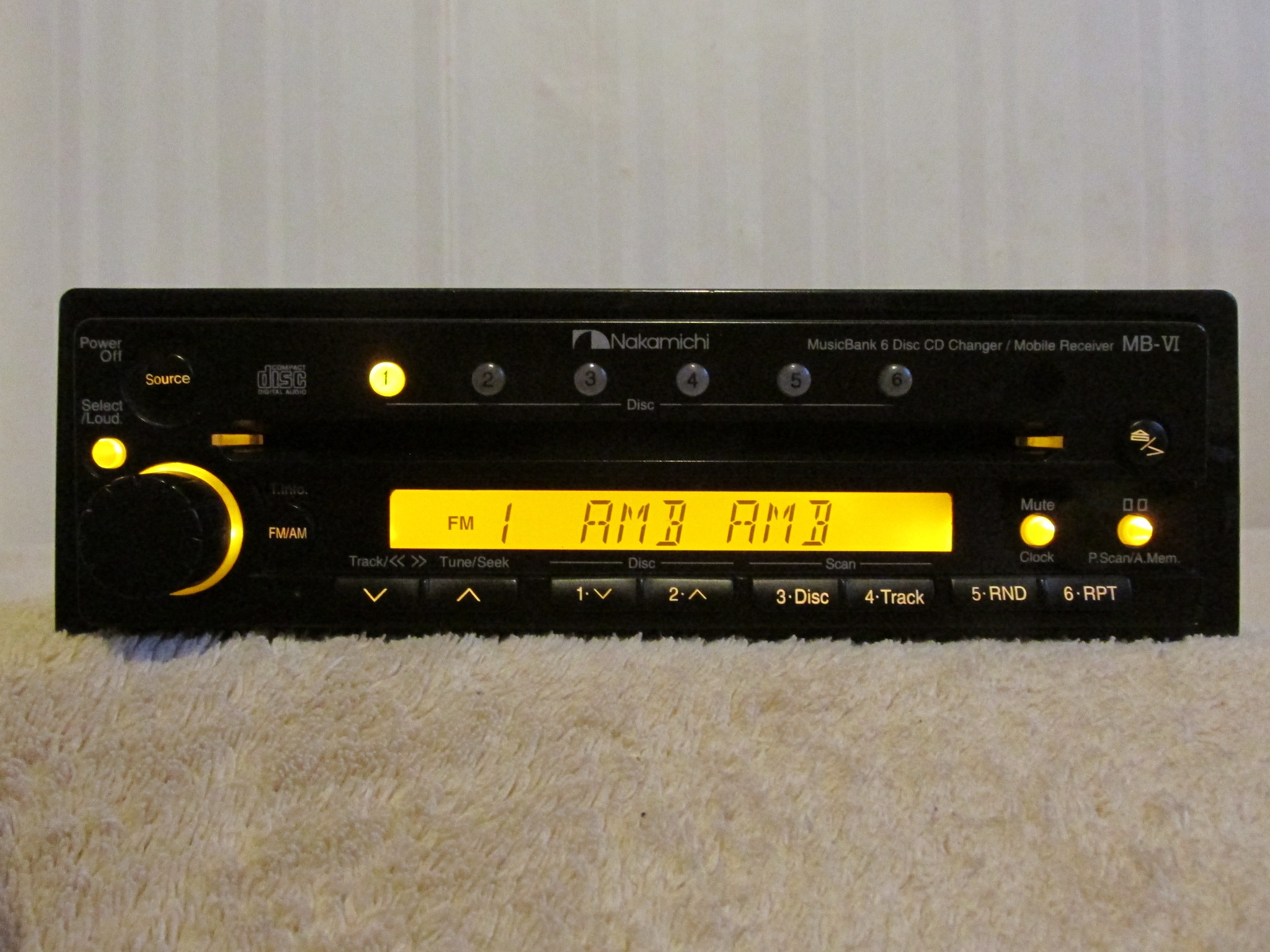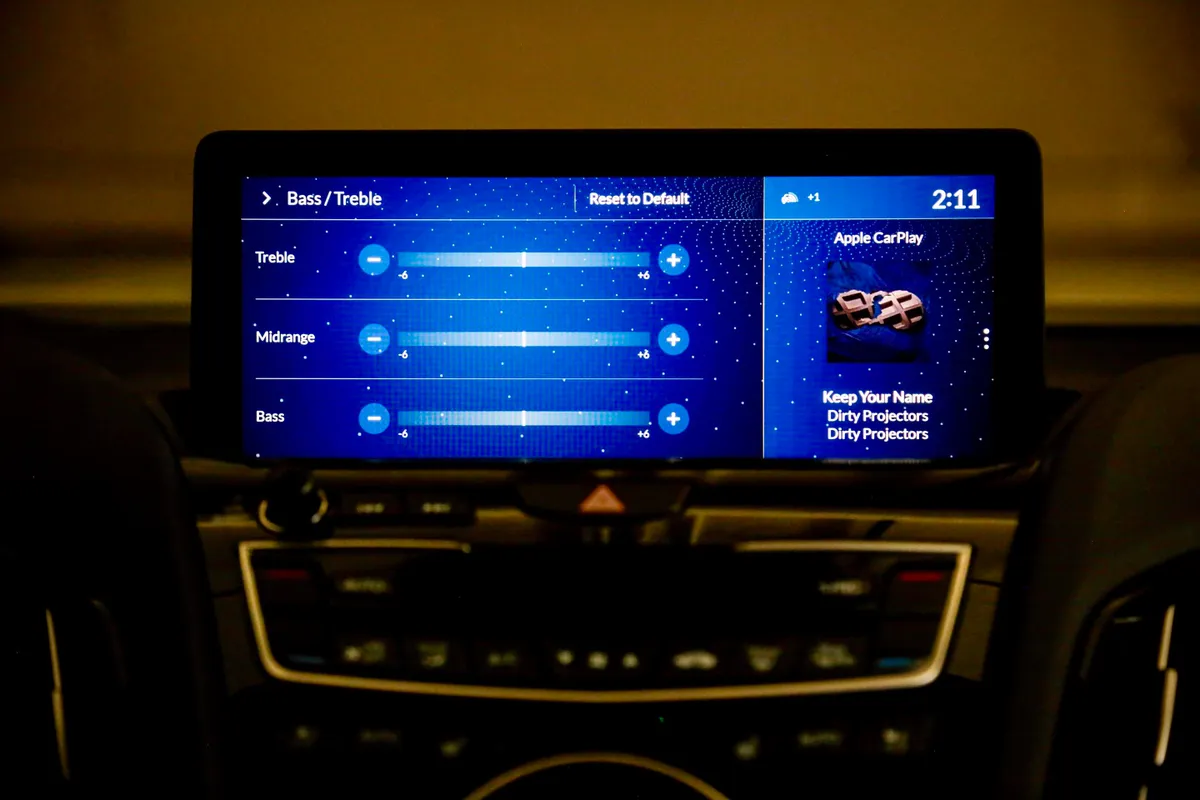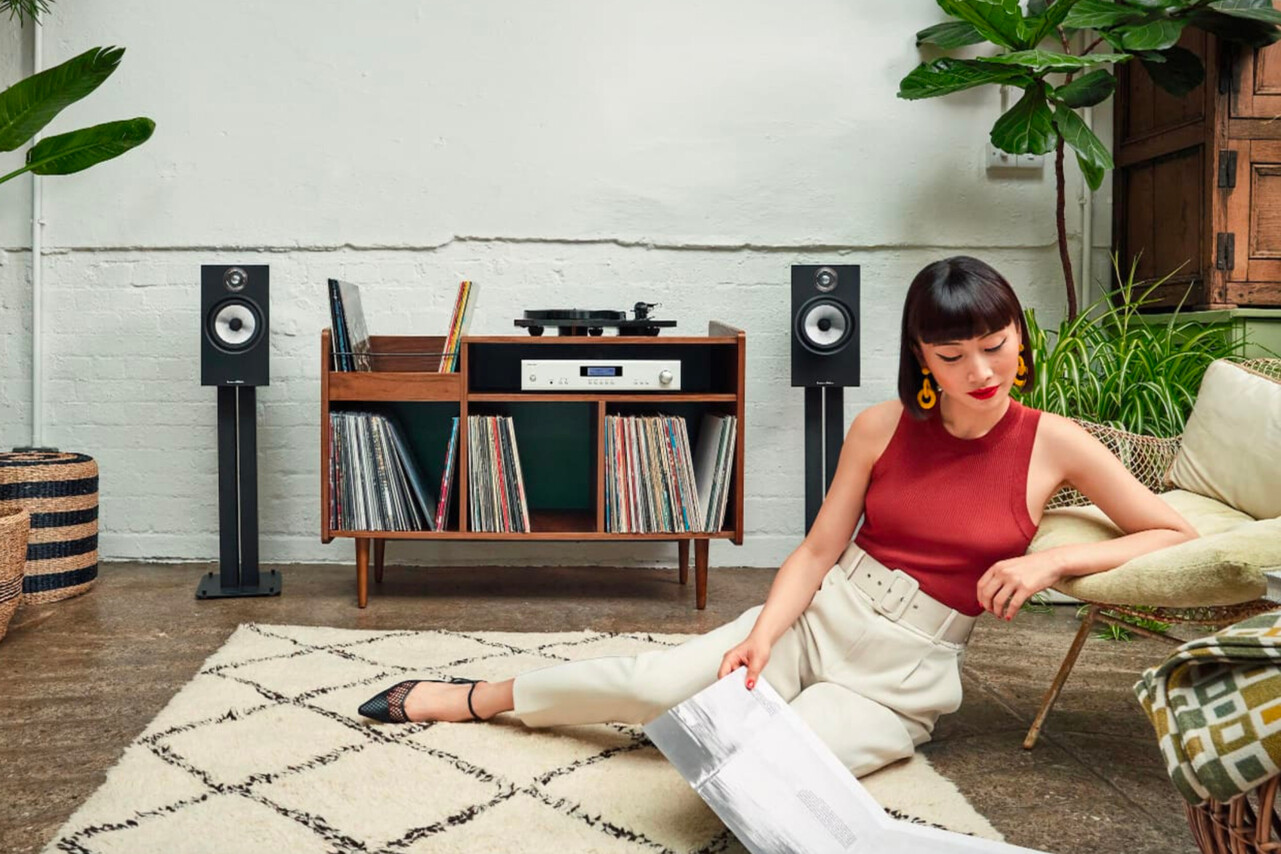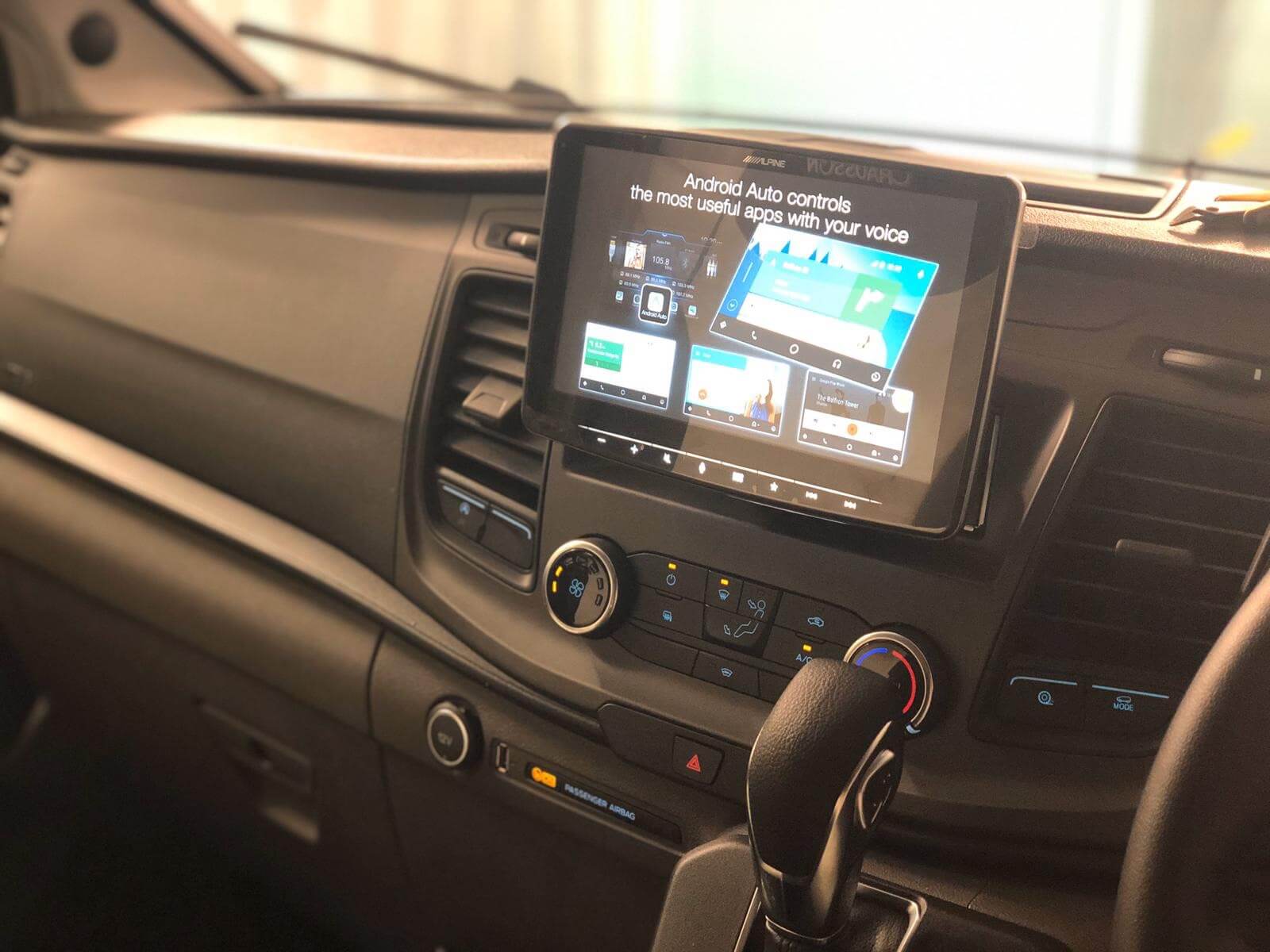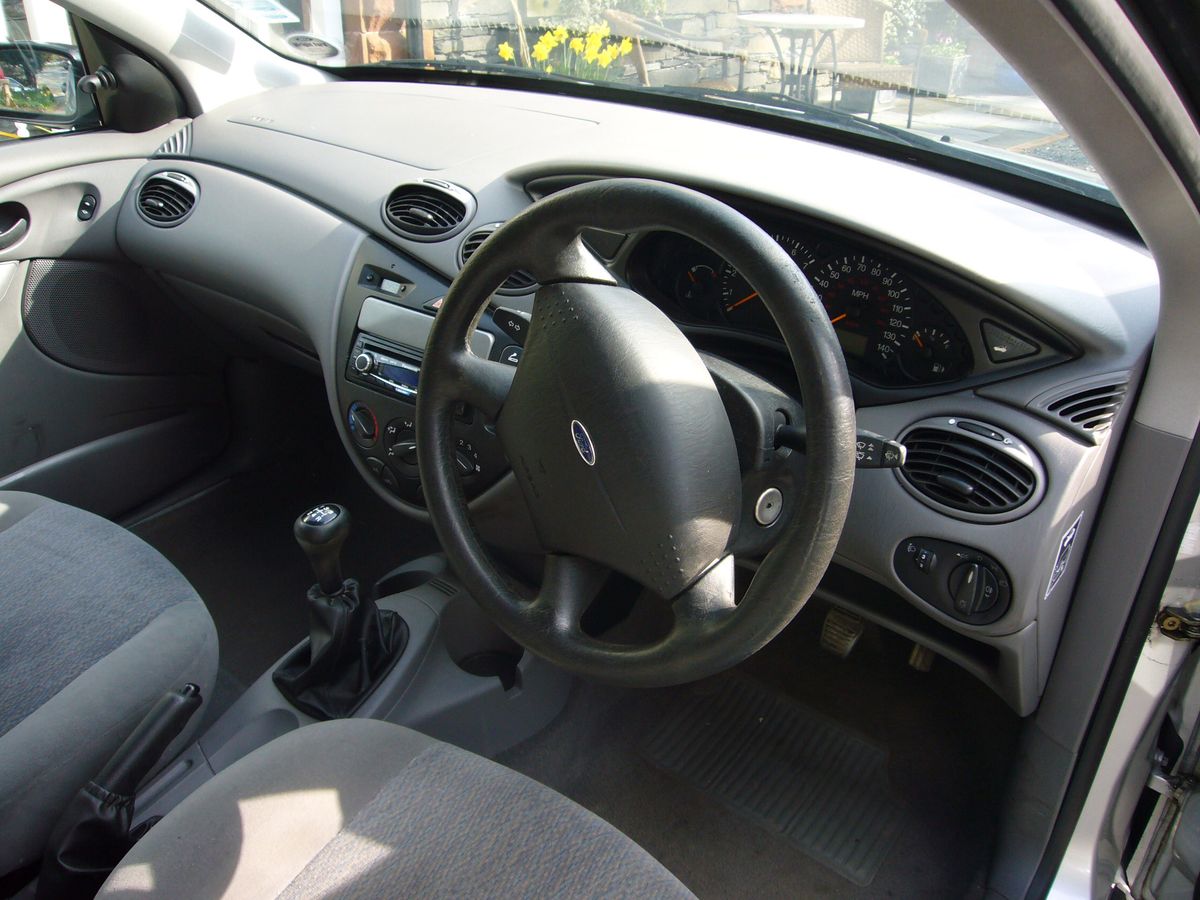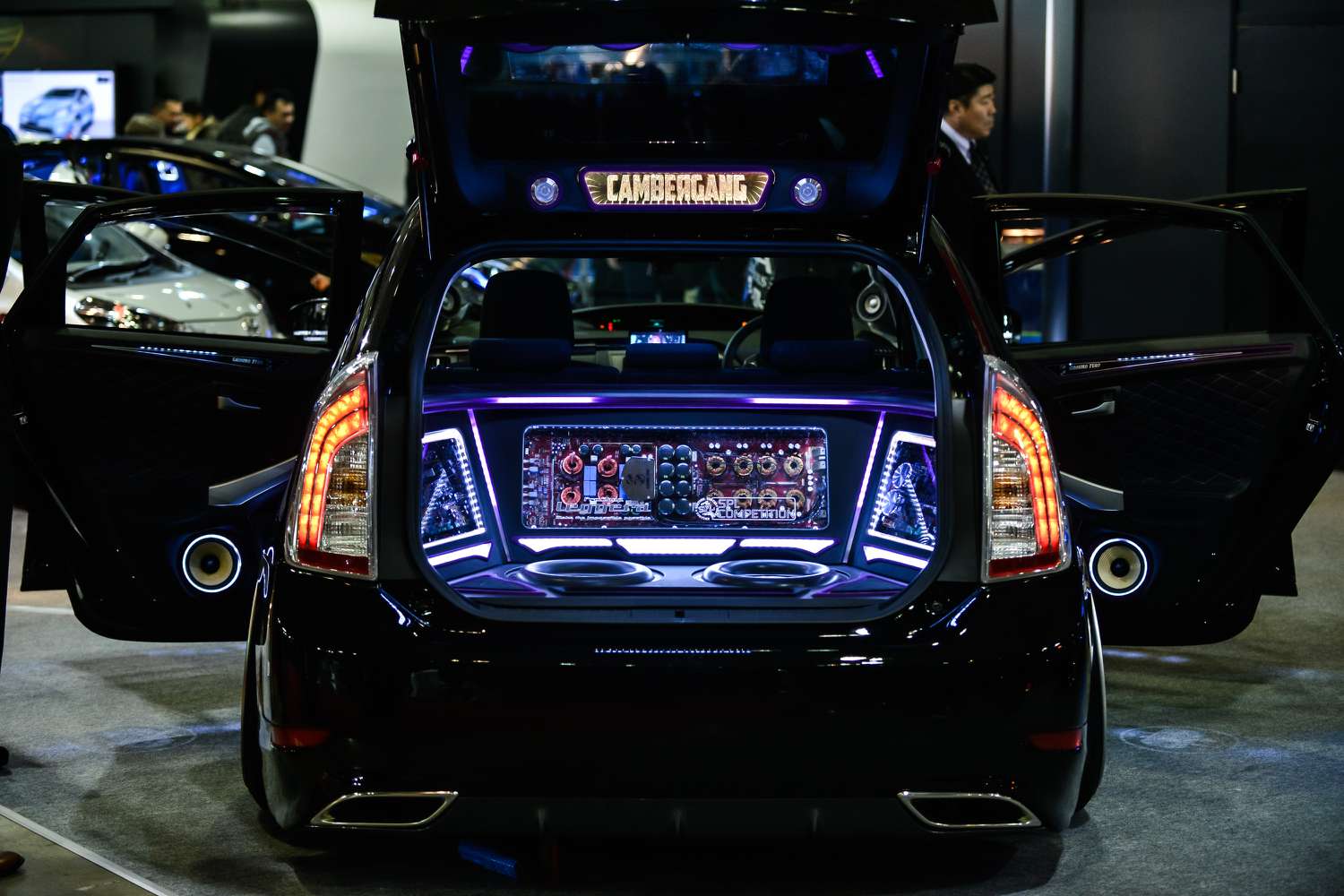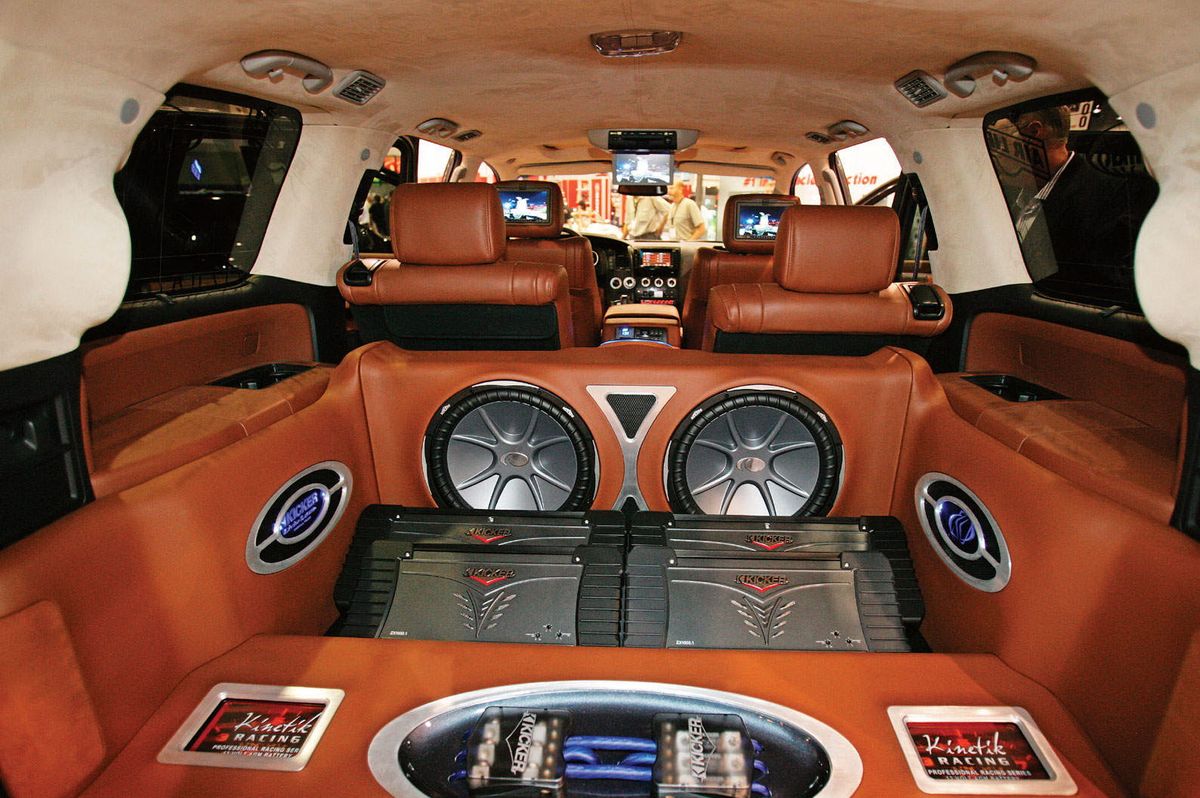Home>Production & Technology>Audiophile>How To Make An Audiophile Car Audio System
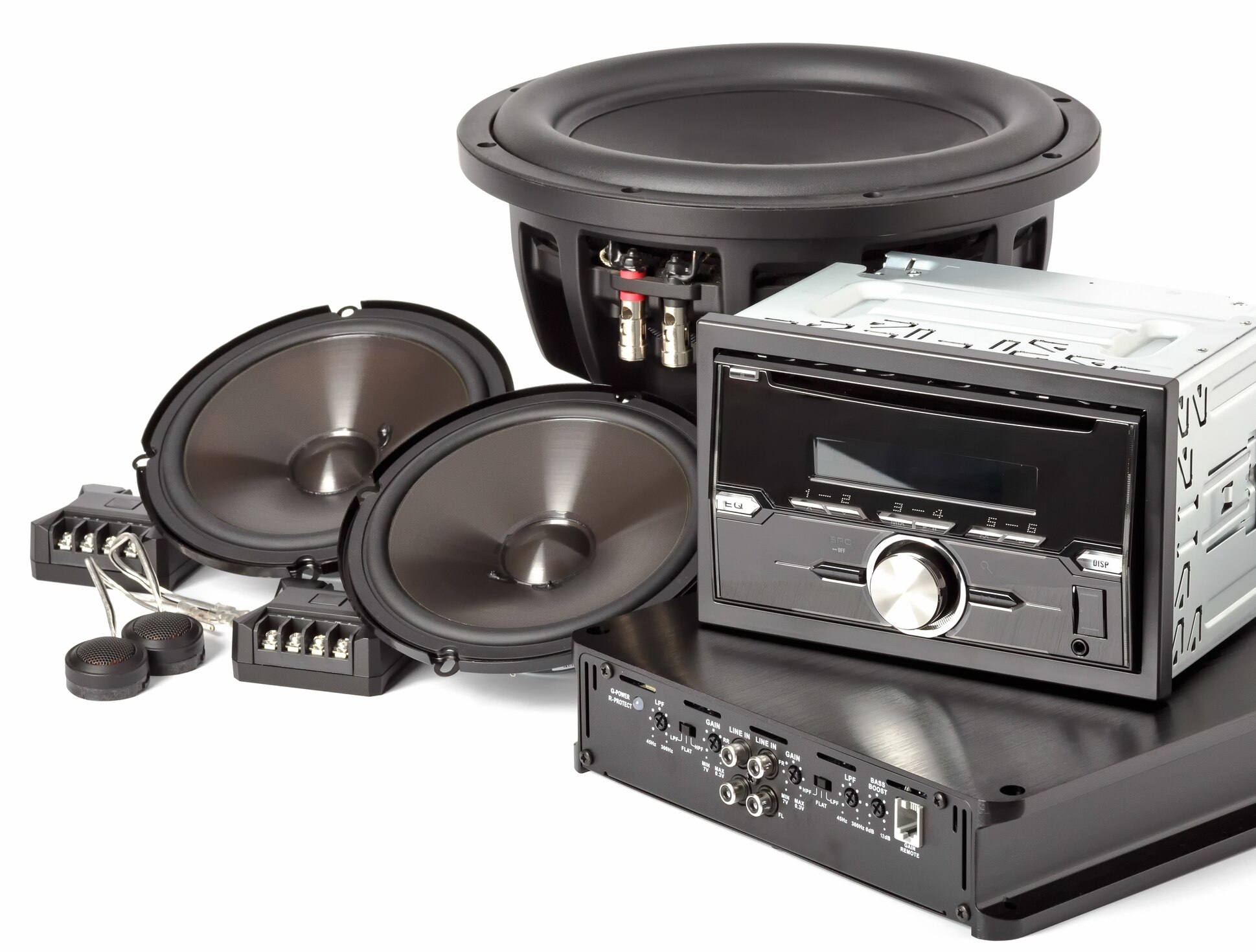

Audiophile
How To Make An Audiophile Car Audio System
Modified: February 18, 2024
Upgrade your car audio system with our expert guide on how to create an Audiophile-worthy setup, designed to deliver unparalleled sound quality and clarity on every drive.
(Many of the links in this article redirect to a specific reviewed product. Your purchase of these products through affiliate links helps to generate commission for AudioLover.com, at no extra cost. Learn more)
Table of Contents
Introduction
Welcome to the world of audiophile car audio systems, where precision, clarity, and depth of sound reign supreme. For those who appreciate the finer nuances of music and crave a truly immersive listening experience on the go, upgrading your car audio system is a must.
However, creating an audiophile-grade car audio system is not just about throwing money at expensive components. It requires careful consideration of various factors, from choosing the right components to fine-tuning the system for optimal performance. In this article, we will guide you through the process of building an audiophile car audio system that will elevate your driving experience to a whole new level.
Before we delve into the details, it’s important to understand what sets an audiophile car audio system apart from a regular car audio setup. An audiophile system is designed to reproduce sound with utmost precision and accuracy, capturing every detail and nuance of the music. It prioritizes clarity, transparency, and a natural soundstage, allowing you to hear the music as it was intended by the artist.
To achieve this level of audio quality in your car, you need to carefully select the right components, upgrade the speakers, enhance the amplification, install a subwoofer for deep bass reproduction, and properly tune the system. Additionally, soundproofing the car interior and using sound deadening materials can significantly improve the overall audio experience.
In the following sections, we will explore each step in detail, providing insights and recommendations to help you create your perfect audiophile car audio system. So, buckle up and get ready to embark on a journey towards audio excellence.
Choosing the Right Components
When building an audiophile car audio system, the foundation lies in selecting the right components that will deliver exceptional sound quality. Here are the key components to consider:
- Head Unit: The head unit serves as the control center of your car audio system. Look for a high-quality unit that supports advanced audio processing features and has a clean preamp output signal.
- Amplifiers: Amplifiers are responsible for powering your speakers and delivering clean, distortion-free sound. Consider investing in dedicated amplifiers for each speaker or a multi-channel amplifier for a more compact setup.
- Speakers: The quality of your speakers plays a crucial role in determining the overall sound performance. Opt for speakers from reputable brands that provide excellent frequency response and sound reproduction.
- Subwoofers: For deep and impactful bass, you’ll need a subwoofer. Choose a subwoofer that complements your speakers and the size of your car’s interior space.
- Cabling and Wiring: To ensure optimal signal transfer and prevent unwanted noise interference, invest in high-quality cables and wires for your audio system.
It’s important to balance your budget with the desired level of performance. While you may be tempted to splurge on the most expensive components, remember that a well-matched system with components that complement each other will often yield better results.
Additionally, consider the power handling capabilities of your chosen components. Make sure the power ratings of your speakers, amplifiers, and subwoofers are compatible, ensuring that they can work together effectively without risking damage.
Moreover, prioritize components that offer advanced features such as adjustable crossover points, equalization options, and time alignment. These features allow you to fine-tune the system and achieve optimal sound reproduction tailored to your listening preferences.
By carefully selecting the right components for your audiophile car audio system, you’ll lay a solid foundation for achieving exceptional sound quality and an immersive listening experience on the road.
Upgrading the Car Speakers
Upgrading your car speakers is a crucial step in building an audiophile car audio system. The quality of your speakers directly impacts the sound reproduction and overall audio experience. Here are some considerations when upgrading your car speakers:
- Speaker Type: There are various types of speakers available, including coaxial, component, and full-range speakers. Coaxial speakers are a popular choice due to their ease of installation and affordability. Component speakers, on the other hand, offer better sound imaging and separation but require separate woofer, tweeter, and crossover installations.
- Speaker Size: Ensure that the speakers you choose are compatible with your car’s speaker mounting locations. Take note of the speaker size and depth to avoid any fitting issues. Refer to your vehicle’s manual or consult with a professional for the correct speaker specifications.
- Frequency Response: Look for speakers with a broad frequency response range to accurately reproduce a wide range of audio frequencies. A wider frequency response generally indicates better sound reproduction capabilities.
- Sensitivity: Speaker sensitivity refers to the amount of sound output produced with a given amount of power. Higher sensitivity speakers require less power to produce the same volume level, making them more efficient. Aim for speakers with a sensitivity rating of at least 88 dB.
- Material Quality: Pay attention to the build quality and material composition of the speakers. High-quality materials like polypropylene, woven fabrics, and silk or aluminum tweeters tend to produce cleaner and more detailed sound compared to lower-quality materials.
When installing your new speakers, it’s crucial to ensure proper speaker placement and aiming. This helps optimize the soundstage and imaging, providing a more immersive listening experience. Consider using speaker baffles or mounts to help reduce vibrations and improve sound clarity.
Furthermore, pairing your upgraded speakers with a dedicated amplifier will greatly enhance the performance. Amplifiers provide ample power and allow for better control and dynamic range, resulting in improved sound quality and clarity.
Remember, the key to achieving a superior audio experience lies in selecting speakers that complement your listening preferences, vehicle constraints, and the rest of your audio system. Take your time to research and audition different speaker options to find the perfect match for your audiophile car audio system.
Enhancing the Amplification
Amplification plays a critical role in bringing out the best in your car audio system. Upgrading your amplification setup will not only provide more power but also improve sound quality, dynamics, and clarity. Here are some steps to enhance the amplification of your audiophile car audio system:
- Choose the Right Amplifier: Selecting an amplifier that matches the power requirements of your speakers is essential. Consider the number of channels you need, the power output per channel, and the amplifier’s overall build and sound quality.
- Separate Amplifiers for Speakers: For the best sound quality, consider using separate amplifiers for each speaker. This allows you to have more control over the power distribution and tailor the amplification to each speaker’s needs.
- Bi-Amping: Bi-amping is a technique that involves using separate amplifiers for the woofer and tweeter of a component speaker system. This enables better control over the individual drivers and can result in improved imaging and clarity.
- Use High-Quality Wiring: Ensure that you use high-quality speaker wire, interconnects, and power cables to minimize signal loss and maximize power delivery. Investing in oxygen-free copper (OFC) or silver-plated wiring can significantly enhance the conductivity and overall performance of your amplification system.
- Optimize Gain Settings: Properly adjusting the gain settings on your amplifier is crucial to prevent distortion and achieve a balanced sound. Consult the amplifier’s manual or seek professional assistance to correctly set the gain levels for your specific setup.
In addition to these steps, consider utilizing sound processing tools such as digital signal processors (DSPs) or equalizers. These tools allow you to fine-tune the audio parameters, adjust crossover points, and apply equalization to achieve the desired sound signature.
Remember, enhancing the amplification is not just about increasing the power output. It’s about finding the right balance and synergy between your amplifier, speakers, and the rest of your car audio system. Take the time to research, audition, and consult with experts to ensure you achieve optimal amplification for your audiophile car audio system.
Installing a Subwoofer
When it comes to achieving deep and powerful bass, installing a subwoofer is a game-changer for your audiophile car audio system. A subwoofer is designed specifically to reproduce low-frequency sounds, adding richness and impact to your music. Here’s how you can properly install a subwoofer:
- Choose the Right Subwoofer: Consider the size, power handling, and enclosure type that will best suit your vehicle and preferences. Subwoofers come in various sizes, such as 8-inch, 10-inch, and 12-inch, with larger subwoofers typically producing deeper bass.
- Select an Enclosure: Subwoofers can be installed in a sealed, ported, or bandpass enclosure. The enclosure type directly affects the subwoofer’s sound output, so choose the one that aligns with your desired bass response.
- Find the Ideal Placement: The location of the subwoofer greatly influences its performance. Common placements include the trunk, under-seat, or in custom-built enclosures. Experiment with different placements to find the sweet spot that maximizes bass reproduction and fits your vehicle’s layout.
- Wiring and Integration: Ensure that you use thick gauge power and ground cables to supply adequate power to the subwoofer amplifier. Properly integrate the subwoofer into your existing audio system, either by utilizing a dedicated subwoofer output on your head unit or wiring it through a line output converter (LOC).
- Tune the Subwoofer: Once installed, it’s crucial to properly tune the subwoofer to achieve a balanced sound. Use a tone generator or test tracks to calibrate the subwoofer’s volume and low-pass crossover settings for seamless integration with your main speakers.
Adding a subwoofer to your audiophile car audio system enhances the low-frequency response, delivering a more immersive and accurate listening experience. It provides the foundation for a well-rounded soundstage and ensures that you can feel the music as well as hear it.
Remember to consider the power requirements and compatibility between the subwoofer and amplifier to avoid underpowering or damaging your equipment. Additionally, invest in quality soundproofing materials to minimize vibrations and create a controlled environment that maximizes the subwoofer’s potential.
Proper installation and tuning of the subwoofer will significantly enhance the overall audio quality of your car audio system, creating a more balanced and impactful listening experience.
Soundproofing the Car Interior
One often overlooked aspect of building an audiophile car audio system is soundproofing the car interior. Soundproofing helps reduce external noise and vibrations, allowing the music to be heard with greater clarity and detail. Here’s how you can effectively soundproof your car interior:
- Insulate Doors and Panels: Apply sound deadening materials, such as butyl rubber or mass-loaded vinyl, to the doors and panels of your car. These materials absorb and dampen vibrations, reducing the transmission of external noise and enhancing the overall sound quality.
- Use Acoustic Barrier Mats: Install acoustic barrier mats, like closed-cell foam or mass-loaded vinyl, in the floor, ceiling, and trunk of your car. These mats add an extra layer of sound insulation and prevent road noise and vibrations from entering the cabin.
- Seal Gaps and Holes: Use foam tape or sealant to seal any gaps or holes in the car’s interior. This helps prevent air leakage and reduces noise infiltration from outside the vehicle.
- Upgrade Weatherstripping: Replace worn-out weatherstripping around the doors and windows to create a tighter seal. This not only improves sound insulation but also reduces wind noise while driving.
- Consider Window Tinting: Window tinting can help block out external noise and reduce heat buildup inside the car. It adds an additional layer of insulation and enhances the overall driving comfort.
Soundproofing your car interior not only enhances the audio experience but also improves the overall comfort and quietness of your vehicle. By reducing external noise and vibrations, you can fully immerse yourself in the music without distractions.
It’s important to note that soundproofing materials and techniques may add weight to the car, so it’s crucial to consider the added mass and its impact on fuel efficiency. Additionally, ensure that the soundproofing materials do not interfere with the proper operation of the car’s airbags or other safety features.
By incorporating soundproofing measures into your car interior, you’ll create an optimal listening environment for your audiophile car audio system, allowing you to fully appreciate the finest sonic details and enjoy a truly immersive driving experience.
Choosing the Best Source Unit
The source unit is the heart of your car audio system, responsible for playing your music and providing various features and functionalities. To create an audiophile car audio system, it’s crucial to choose the right source unit that meets your needs and enhances the overall audio experience. Here are some factors to consider when selecting the best source unit:
- Head Unit Features: Look for a head unit that offers advanced audio processing features, such as built-in equalizers, time alignment, and high-resolution audio playback. These features allow you to fine-tune the sound and customize it to your liking.
- Compatibility: Ensure that the source unit you choose is compatible with your desired audio sources. Whether you prefer CDs, USB drives, Bluetooth streaming, or smartphone integration, make sure the head unit supports the necessary connectivity options.
- User Interface: A user-friendly and intuitive interface is important for easy navigation and control of your audio system. Look for a head unit with a clear display, responsive touch screen, and easily accessible controls.
- Audio Processing Abilities: Consider the sound processing capabilities of the source unit, such as advanced digital signal processing (DSP) and high-quality digital-to-analog converters (DACs). These features can significantly impact the sound quality and overall performance of your car audio system.
- Expandability: Choose a source unit with expandability options, such as preamp outputs for connecting external amplifiers or compatibility with aftermarket add-ons like navigation systems or rearview cameras.
- Build Quality: Opt for a head unit from reputable brands known for their quality and durability. A well-built source unit will provide reliable performance and last for years to come.
Consider your budget and prioritize the features that matter most to you. While there are a variety of head units available, focus on finding a unit that strikes the right balance between functionality, audio quality, and ease of use for your specific needs.
Remember to also consider the aesthetic compatibility of the source unit with your car’s interior. Look for a head unit that blends seamlessly with the design and style of your vehicle.
By carefully selecting the best source unit for your audiophile car audio system, you’ll ensure that you have a solid foundation for delivering high-quality sound and maximizing your listening pleasure while on the road.
Properly Tuning the Car Audio System
Tuning your car audio system is a crucial step in optimizing its performance and achieving the best sound quality. Properly tuning the system ensures that all the components work together harmoniously and delivers an immersive listening experience. Here are some steps to properly tune your car audio system:
- Balance and Fade: Adjust the balance and fade settings to ensure that the sound is evenly distributed across all the speakers. This helps create a balanced and immersive soundstage.
- Crossover Settings: Set the crossover points for your speakers to ensure that each driver receives the appropriate range of frequencies. This prevents distortion and allows for cleaner and more accurate sound reproduction.
- Equalization: Utilize the equalizer settings to fine-tune the frequencies and shape the sound to your preferences. Adjust the bass, midrange, and treble frequencies to find the optimal balance and clarity.
- Time Alignment: Time alignment adjusts the delay for each speaker to ensure that the sound from each driver reaches the listener’s ears at the same time. This helps create a more realistic and natural soundstage.
- Test and Listen: Utilize test tracks or reference songs to evaluate the performance of your audio system. Listen for any distortion, imbalance, or frequency irregularities and make further adjustments accordingly.
- Consider Professional Help: If you are not confident in tuning your car audio system yourself, consider seeking assistance from a professional car audio installer or tuning expert. They have the expertise and tools to fine-tune the system for optimal performance.
Tuning your car audio system is an iterative process that requires patience and keen listening. Take the time to experiment with different settings and make gradual adjustments until you achieve the desired sound quality.
Additionally, keep in mind that the interior of your car can greatly impact the audio quality. Implementing soundproofing measures, such as using damping materials or installing sound-absorbing panels, can further enhance the tuning process by minimizing unwanted resonances and reflections within the car’s interior.
By properly tuning your car audio system, you’ll optimize its performance, achieve the desired sound signature, and fully immerse yourself in the music during your drive.
Adding Sound Deadening Materials
Adding sound deadening materials to your car interior is a critical step in improving the audio quality and reducing unwanted noise. These materials help minimize vibrations, resonances, and external sound infiltration, allowing you to enjoy a cleaner and more immersive audio experience. Here is how you can effectively add sound deadening materials:
- Identify Problem Areas: Assess your car interior to identify areas where noise and vibrations are most prominent. Common areas include the doors, floor, roof, and trunk.
- Choose the Right Materials: There are several types of sound deadening materials, such as butyl rubber sheets, mass-loaded vinyl (MLV), and foam-based materials. Select materials that are specifically designed for automotive use and offer good sound insulation properties.
- Door Panel Treatment: Remove the door panels and apply sound deadening material on the inner side of the door. This helps dampen vibrations caused by the speakers and prevents sound leakage through the door panels.
- Floor and Trunk Treatment: Install sound deadening materials on the car’s floor and trunk area to reduce road noise and vibrations. Consider using materials with a combination of foam and MLV for effective noise insulation.
- Roof Treatment: Apply sound deadening material to the roof of your car to minimize sound reflections and improve the overall acoustics inside the cabin.
- Seal Gaps and Openings: Use acoustic sealant or foam tape to seal any gaps or openings in the car interior. This prevents sound leakage and ensures better sound insulation.
Adding sound deadening materials not only enhances the audio quality but also improves the overall comfort of your car by reducing external noise and vibrations. The result is a quieter and more enjoyable ride with improved clarity and detail in your audio playback.
It’s important to note that while sound deadening materials can significantly improve the acoustic performance of your car, they may add weight to the vehicle. Consider the added mass and its impact on fuel efficiency, especially if you are planning to install them extensively.
By incorporating sound deadening materials strategically in your car interior, you’ll create a controlled and optimized acoustic environment, ensuring that your audiophile car audio system performs at its best, free from unwanted noise and vibrations.
Fine-tuning the System with Equalization
Equalization is a powerful tool for fine-tuning your car audio system and achieving the desired sound signature. By adjusting the equalizer settings, you can enhance specific frequencies and correct any audio imbalances. Here are some essential steps to effectively fine-tune your system with equalization:
- Understand the Equalizer: Familiarize yourself with the various bands on your equalizer. Typically, car equalizers have bands for bass, midrange, and treble frequencies. Each band can be adjusted to boost or cut certain frequencies.
- Start with Flat Settings: Reset your equalizer settings to a flat or neutral position. This provides a baseline for equalization adjustments. Avoid boosting or cutting any frequencies initially.
- Listen to Reference Tracks: Select a few reference tracks or genres of music that you are familiar with. Play these tracks and listen attentively, paying attention to the different frequency ranges and any audio imbalances that you notice.
- Eliminate Audio Imbalances: Adjust the equalizer settings to correct any audio imbalances you detected while listening to the reference tracks. For example, if you notice excessively boomy bass, you can reduce the lower frequencies to achieve a more balanced sound.
- Tweak to Suit Your Taste: Fine-tune the equalizer settings based on your personal preference. Experiment with slight adjustments to find the sweet spot that enhances the audio quality and matches your preferred sound signature.
- Test Various Listening Environments: Different listening environments can impact the perception of sound. Take the time to test your equalization settings in different acoustic environments, such as open roads and enclosed spaces, to ensure your settings work well in various conditions.
- Consider Advanced Equalization Techniques: For more precise equalization control, you can utilize digital signal processors (DSP) or parametric equalizers. These advanced tools allow for more detailed adjustments, such as fine-tuning specific frequency ranges or applying room correction algorithms.
Remember, the goal of equalization is to enhance the audio quality and achieve a balanced sound. Strive for a natural, transparent sound that faithfully reproduces the characteristics of the music you are listening to.
Keep in mind that excessive boosting or cutting of frequencies can lead to distortion or a less accurate sound representation. Use equalization sparingly and make conservative adjustments to achieve the desired results.
By fine-tuning your car audio system with equalization, you can tailor the sound to your preferences and ensure an optimal listening experience that matches your audiophile expectations.
Conclusion
Building an audiophile car audio system is a journey that combines technical knowledge, careful component selection, and precise tuning. By following the steps and considerations outlined in this article, you can elevate your driving experience to new sonic heights. From choosing the right components and upgrading the speakers to enhancing the amplification and adding sound deadening materials, each step plays a crucial role in creating a top-tier audio system.
Remember that the key to achieving exceptional sound quality lies in finding the right balance and synergy between the components. Take the time to research, audition, and consult with professionals to ensure that all aspects of your audio system work harmoniously.
Proper tuning, including equalization and fine adjustments, is vital to obtain the desired sound signature and ensure an immersive audio experience. Patience and attentiveness during the tuning process will ultimately reward you with an audio system that suits your preferences and brings out the best in your favorite music.
Whether you’re cruising down the highway or stuck in traffic, your audiophile car audio system will deliver the clarity, precision, and depth of sound that you crave. So, turn up the volume, sit back, and enjoy the remarkable audio journey that your car has become.

